Top speed 865 km/h Length 11 m Engine type Armstrong Siddeley Viper | Wingspan 9.85 m Weight 3,200 kg First flight 1985 | |
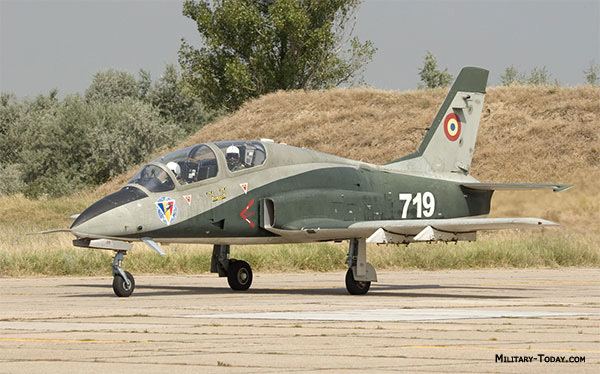 | ||
Iar 99 soim flying in black sea defense aerospace 2010
IAR 99 "Șoim" (Hawk) is an advanced jet trainer and light attack aircraft capable of performing close air support and reconnaissance missions. The IAR 99 is intended to replace the Aero L-29 Delfin and L-39 Albatros as trainer from the Romanian Air Force inventory. The aircraft is of semi-monocoque design, with tapered wings and a swept back tail unit. A large blade-type antenna installed beneath the nose on the port side of the fuselage gives the IAR 99 trainer a distinctive appearance.
Contents
- Iar 99 soim flying in black sea defense aerospace 2010
- Iar 99 soim presentation
- Development
- Cockpit
- Avionics
- Countermeasures
- Operators
- Specifications
- General characteristics
- Performance
- Armament
- References
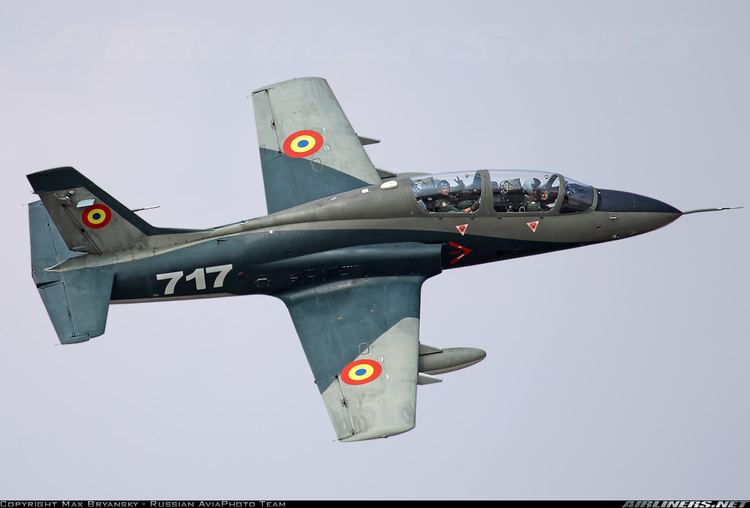
Iar 99 soim presentation
Development
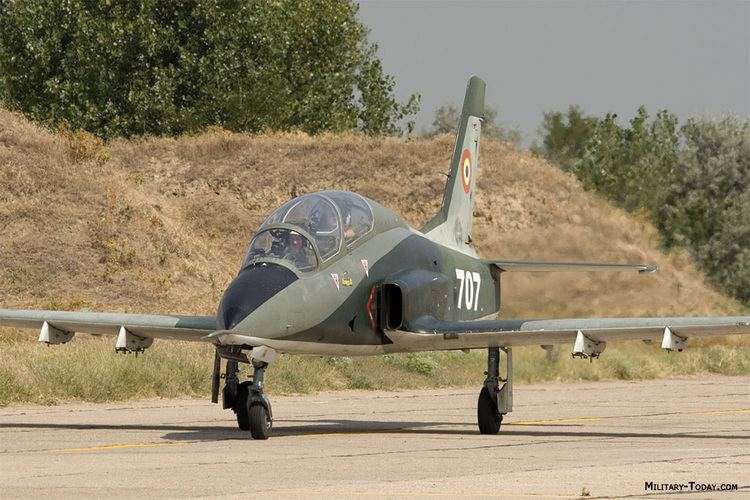
The design of the aircraft started in 1975 and this would be the first jet trainer fully designed and built in Romania. In 1979 funding was approved for building the first trainer by I.R.Av Craiova where the IAR 93 attack aircraft was currently built. The prototype (S-001) flew on 21 December 1985 with Lt. Col. Vagner Ștefănel at the controls. S-002 served for static (ground) testing, S-003 being the second flying prototype (later re-serialled 7003). The aircraft entered series production in 1987, with 17 aircraft delivered to the Romanian Air Force by 1989. Two were lost in the 1990s (numbers 710 and 714). In 1990 the fall of the Eastern Block created new export opportunities for the aircraft, but while the aircraft had excellent aerodynamic and handling qualities, it was left behind in its class because of its obsolete avionics, with upgrading becoming a priority. The first upgrade attempt was made in 1990 by I.R.Av Craiova together with the Texas-based Jaffe Aircraft Corporation. Two aircraft were modified by installing Honeywell avionics, while the canopy was changed to a two piece design instead of the original one piece. The aircraft were displayed at the 1990 Farnborough Airshow, being proposed for the Joint Primary Aircraft Training System program for the United States of America, although this work resulted in no orders.

In 1992 a new upgrade program was started in partnership with IAI Lahav of Israel, for both Romanian Air Force use and export. One aircraft (number 7003, the third prototype) was brought to the new IAR 109 "Swift" standard. It was equipped with HOTAS (Hands On Throttle and Stick) controls in both cockpits, a wideangle HUD (Head-Up Display) with Up Front Control Panel in the front cockpit, two 3 inch displays in both cockpits, a ring laser gyro Inertial Navigation System (INS), as well as the integration of both Eastern and Western weapon systems on the aircraft. The aircraft was displayed at the 1993 Paris Air Show. In 1994, however, this program also ground to a halt.
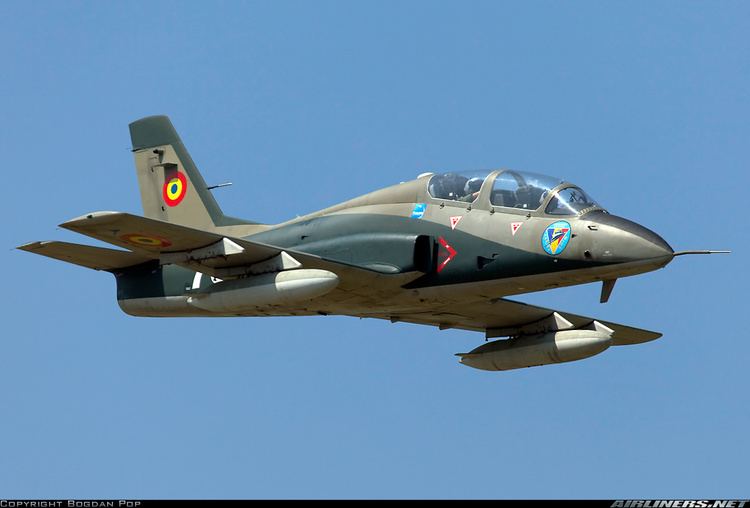
In 1996 the upgrade program of the IAR 99 was revived with the need for a lead-in trainer for the newly upgraded MiG-21 Lancer. The Israeli company Elbit was chosen as an integrator and the avionics package is compatible with 5th generation fighter systems and it is inspired from the MiG-21 Lancer upgrade but adapted to IAR 99 needs. The first upgraded IAR 99 was the 18th production aircraft (number 718), which performed its first flight on 22 May 1997. The upgraded IAR 99 was displayed at Paris in 1997 and Farnborough in 1998. On 6 August 1998, the Romanian Government approved the introduction into series production of the upgrade program for 40 IAR-99s out of which 24 were supposed to be delivered by 2001. The new variant was designated as IAR 99C.

Later the number was reduced to 12, only seven of which are to be new-built (numbers 719-725), and five upgraded from existing IAR-99 (numbers 709,711,712,713,717). Thus, RoAF will have 12 IAR-99C Soim (upgraded) and ten IAR-99 Standard, with 7003 and 718 probably remaining with Avioane Craiova SA as demonstrator aircraft.
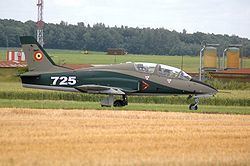
A modernized version of the IAR-99 called IAR-99 TD is currently being developed. A prototype is expected to be completed by 2016.
Cockpit
The aircraft has a tandem stepped dual control cockpit equipped with Martin-Baker Mk 10 zero-zero ejection seats. The instructor's seat at the rear position is raised by 35 cm to provide better visibility. The canopy was made as a single piece (prototypes and planes 701-707), later changed to a two-piece canopy, both opening to the starboard side.
The cockpit is equipped with HOTAS control. The cockpit is equipped with liquid crystal displays. Both the pilot and the instructor are equipped with an DASH Display and Sight Helmet which is currently deployed on the MiG 21 Lancer. The helmet slaves the onboard weapons systems to the pilot's line of sight. The visor's display confirms when target acquisition has been achieved. The visor also displays the data from the HUD. Flying and navigation data are displayed on HUD (Head-Up Display), on the helmet DASH and MFDC (color multifunction displays).
Avionics
Elbit is supplying the aircraft's advanced avionics suite installed on a MIL-STD-1553B data bus. The advanced avionics suite, including communications, navigation, identification systems and the cockpit configuration, are similar to those of the MiG 21 Lancer and F-16 fighter aircraft. The IAR-99 is also equipped with video and debriefing systems.
The communication systems include VHF and UHF communications, voice-activated intercom and an IFF transponder. The flight systems include a VOR/ILS, linked VHF omnidirectional antenna radio ranger linked to the instrument landing system. Other navigation tools include distance measuring equipment (DME), an automatic direction finder (ADF), a Northrop Grumman inertial navigation system and a Trimble GPS system.
One of the best features of the aircraft avionics is a virtual training system which allows, based on a data link system, inflight simulations of firing and air combat capabilities using two or more aircraft.
Countermeasures
The IAR 99's electronic warfare suite is based on the Elisra Electronic Systems radar warning receiver and electronic countermeasures pod plus a chaff and flare decoy dispenser. The systems are integrated through the 1553 data bus. The radar warning receiver detects pulse-Doppler, pulse and continuous wave radar threats and provides threat identification by comparing signal characteristics against a threat database.
Operators
Specifications
Data from Avioane Craiova SA
